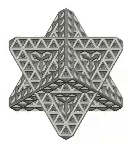

Rayne Research Group
Additive Manufacturing and Metamaterials
Thrust 1: Additive Manufacturing (3D Printing technologies) Processing Technologies
We develop the next generation of additive manufacturing techniques capable of processing combinations of structural, electronic and functional materials. While AM Techniques have received rapid growth in the past decades. It current faces challenges in scalability over multiple feature size lengthscales, speed as well as the ability to simutaneously processing several classes of materials (polymer, electronic, functional and ferroelectric materials) .
Here we actively pursue several areas in additive manufacturing science and technology:
1) Processing physics and novel mechanisms underlying new manufacturing processes. For example, we develop additive manufacturing techniques capable of assembling microscale features overall large areas (from micro-meter to meter level); novel processes that introduce mesoscale control of features over 3D topology: e.g., 3D alignment of nano-scale inclusions.
2) Multi-material 3D printing processes that are capable of patterning different classes of material into any 3D geometry and architectures, e.g., printing dielectric materials with metal, ceramics and multi-functional materials.
3) Hybrid Additive manfuacturing for metal, ceramics and composite hybrids.






Charge Programmed Additive Manufacturing for 3D Electronics

Thrust 2: Computational and Machine Learning Design for Metamaterials
Most commonly, material properties (such as density, strength, toughness, stiffness, thermal, piezoelectricity, ferroelectricity) are highly coupled in natural and man-made materials. The aim of this research is to capitalize the unique benefits design of artificial 3D architectures spanning multiple hierarchical levels to create new materials that possess designed behaviors and properties. This area of research exploits the intersection of artificial intelligent design, mechanics, and computations and machine learning to design new materials and devices.

Fractal like 3D nanoarchitectures

Hierarchical Metamaterials: An ultralight Nickel phosphorous metamaterials comprised of disparate 3D micro-architectures across over 7 orders of magnitude in length-scale.
X. Zheng*, et al Nature Materials (Cover), 15, 1100–1106 (2016)


Combination of dissimilar mechanism from disparate hierarchies

Thrust 3: Electronic and Multi-functional Materials (piezoelectric, dielectric and conductive materials)
With an unpresented control of topology, high resolution feature sizes, and assembling of multiple active and structural materials into complex architectures, new classes of novel devices, smart materials and robots can be realized with extraordinary functionalities via a fraction of volume and weight compared to products fabricated via existing manufacturing routes.
Efforts will be focused on the following areas:
1) Biodegradable tunable microlattices for accelerated cell growth and wound healing, tissue ablation and ultrasound detection
2) Functionally graded 3D material with biomolecules for biosecurity and countermeasures
3) Micro-actuators and integrated robots with high force and displacement output and large bandwidth.
4) Smart materials for novel air and underwater transducers for integrated self-sensing.
